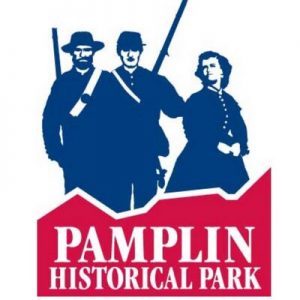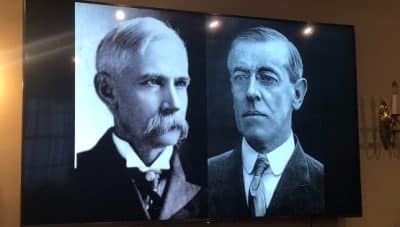
Sunday, May 26th will begin with a new exhibit opening featuring a history of the Park and never before seen artifacts from the collection and unearthed within the 424-acre campus. Children and families will enjoy a period baseball game, children’s book readings, period games, a period dance school and a scavenger hunt. The Williamsburg Youth Choir and 26th North Carolina Regimental Brass Band will perform and entertain visitors. A time capsule filled with items from the Park staff will be deposited in a ceremony where it is to be later opened in twenty-five years.
Monday, May 27th will open with a 25th Anniversary ceremony to be followed by a Memorial Day commemoration. Jake Wynn of the Clara Barton’s Missing Soldiers Office will provide a presentation on the human costs of war. Afterwards, an Honor Guard will present the colors, with a cannon salute and the playing of Taps. Walking tours and living history demonstrations will continue throughout the day.
In 1991, a tract of land including a 3/4 mile stretch of pristine earthworks came available for purchase in Dinwiddie County, Virginia. It was on this site that the April 2, 1865 Breakthrough Battle occurred where General U.S. Grant’s forces broke through Confederate General Robert E. Lee’s defensive lines. This event led to the end of the 292-day siege of Petersburg and surrender at Appomattox Court House a mere week later.
A Civil War preservation group alerted Dr. Robert B. Pamplin, Jr. a businessman and philanthropist living in Portland, Oregon, that the land was for sale. That the land had also belonged to his ancestors during the Civil War. Dr. Pamplin and his father Robert B. Pamplin, Sr. saw the opportunity not only to preserve the battlefield and their ancestral land but also to educate. Shortly, thereafter they acquired the land and constructed an interpretative center . This led to following land acquisitions to include a parcel with the Pamplin’s ancestral home, Tudor Hall. With these elements in place, the Park first opened in 1994.
While the facility was outstanding, Dr. Pamplin envisioned an ambitious plan to rank the Park among the nation’s elite historical attractions. He assembled a blue-ribbon team of professionals and historians who set out to add a world-class museum along with complete education and interpretive programs. This vision became a reality in 1999 when The National Museum of the Civil War Soldier opened it’s doors to 25,000 square feet of artifacts within a state-of-the-art facility.
Since 1999, the Park has continued to build upon a foundation of excellence with The Field Quarter which opened in 2001 to interpret slave life and the mid-1700s Banks House which opened to the public in 2002. The Banks House was used by U.S. Grant as his headquarters during April 2-3, 1865 and an original slave dwelling sits to the rear of the house. In 2003, an Education Pavilion opened to meet the needs of expanded programming. A 1.5 mile Headwaters Trail opened the next year in 2004, which lead to the then recently restored Hart Farm.
This same year the Park was listed on the National Register of Historic Places and designated as a Virginia Historic Landmark. 2005 saw the opening of the highly acclaimed Civil War Adventure Camp where participants can stay overnight, and have a hands-on learning experience as a Civil War soldier. Several outbuildings like a tobacco barn and the addition of live stock with demonstration gardening cultivated more opportunities for agricultural interpretation at the Tudor Hall site in 2005.










